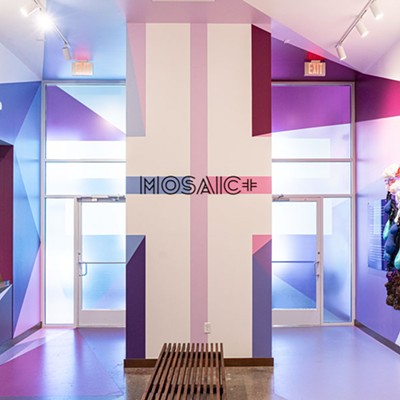
“If we’re going to operate as a fully functional 24-hour downtown, we need more than an elementary school. We need a middle school and a high school,” said Russell Claus, city planning director, about John W. Rex Elementary School, under construction at Sheridan and Walker avenues.
The $14 million charter school is the result of a public-private partnership between Oklahoma City Public Schools and OKC Quality Schools Inc., in 2011.
A 15-member board of directors will oversee the school’s planning, governance and operation.
Kirk Humphreys, chairman of OKC Quality Schools, agreed that continued residential development will depend, in part, on schools built in the downtown area.
“If you can’t get the kids’ needs met from elementary through high school graduation, they (families) won’t move downtown,” he said.
When Rex Elementary opens next fall, it will include only kindergarten through second grade. An additional grade will be added each year through sixth grade.
The school will initially house about 225 students but will hold an estimated 550 students.
Humphreys, the school’s board chairman, said the panel eventually will make plans regarding a downtown middle school and a high school.
“We need to give people a path all the way through high school. We will be looking at that question next fall or the following year,” he said.
In the meantime, Humphreys and others are excited about the impact that the new elementary school will have on downtown.
“I remember when downtown rolled up its sidewalks at 5 p.m. It’s not that way now,” he said. “Now, there’s lots of activity, lots of housing. It’s appropriate that we will soon have a school downtown. It shows we’re becoming a real urban area.”

But downtown schools are nothing new. Oklahoma City’s first high school, Central High School, opened in 1910 at NW Seventh St. and Robinson Ave. and was operational for nearly 60 years before closing in the 1970s.
Convenience issue
Parents who work or live downtown, Claus said, will find John W. Rex Elementary an asset for an urban lifestyle.
“People are seeing this as an extra significant attraction,” he said.
“Downtowns are becoming a different beast than in the past. You’ve had offices, some retail and some restaurants. But now there are schools.
It is changing, and they (schools) are part of that transformation.”
Enrollment priority will be given to, in descending order:
• students who live in the school’s boundary area,
• district students who attend failing elementary schools with grades of “D” or “F,”
• all other school district students,
• children who have parents employed downtown.
Generally, the school’s boundaries are NW 13th St. south to the Oklahoma River, and from Western Avenue east to Lottie Ave.
Former
Oklahoma City Public Schools Superintendent Karl Springer predicted the
elementary will be the “in-place” for parents to send students.
Springer retired Aug. 30. Former Oklahoma State Secretary of Commerce
Dave Lopez is interim superintendent.
“It will put us on the map for creating an urban school that helps create an urban community,” Springer said.
School
and city leaders expressed optimism that the school will allow easy
access to learning centers including the Myriad Botanical Gardens, the
Ronald J. Norick Downtown Library, government buildings and the Core to
Shore area, which one day will include a 70-acre downtown park.
“The selection of this site couldn’t have been planned any better,” said Jim Burkey, chief operations director for OKC schools.
The school was funded through the MAPS for Kids initiative voters approved in 2001.











